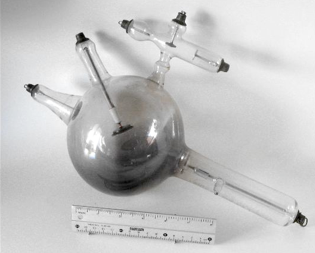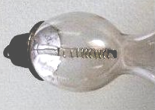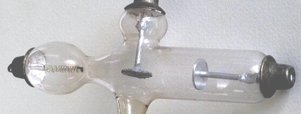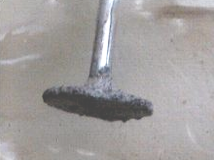“BETZ” Tube
Ref. B14





This German made tube is 14”(35 cm) long with a 6”(15 cm) bulb. It dates probably to the mid-years of the first decade of the 20th century, and bears on the cathode side of its glass wall the inscription:
Frank S. Betz Co., Chicago.
Germany - No. 2849
Patent pending.
The aluminum cathode is of the typical concave shape. The light anti-cathode is fitted with a platinum foil target, and the anode is a small flat aluminum disc.
The unusual feature of this tube is its 3-electrode regeneration device where the “anode” electrode, to the left in the picture, is a spiral of thin shiny metal wire, probably platinum, around a small glass rod. The “cathode” electrode to the right is a small flat aluminum disc, 12mm diameter. The third electrode, a flat disc facing the communication between the regeneration device and the main tube cavity, is of the same size as the cathode disc, and is covered with a rough and granular black material, probably of carboniferous nature. The mode of action of this regeneration device is unclear, and any explanation of the process will be appreciated.